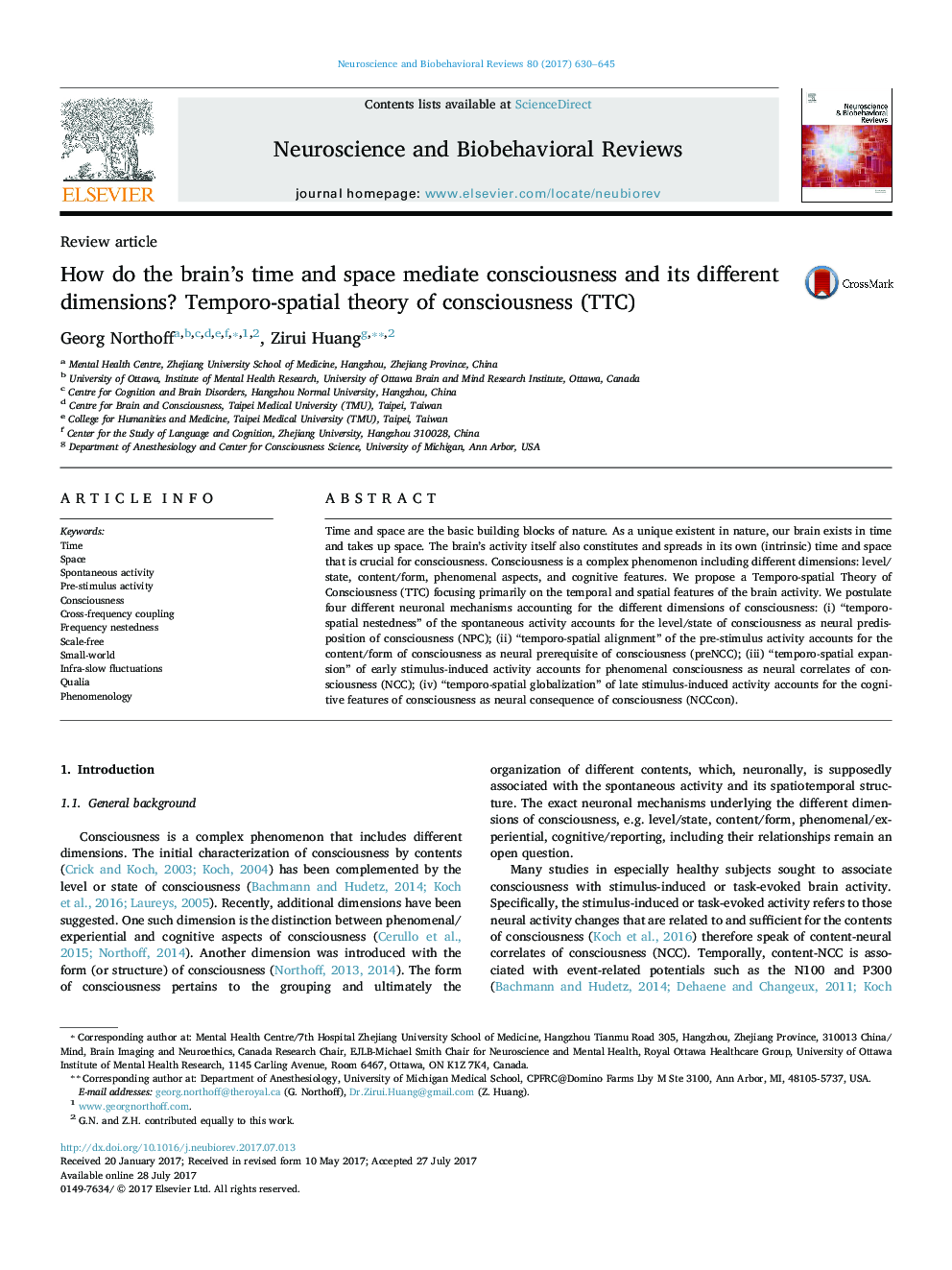| Article ID | Journal | Published Year | Pages | File Type |
|---|---|---|---|---|
| 5043470 | Neuroscience & Biobehavioral Reviews | 2017 | 16 Pages |
Four neuronal mechanisms account for different dimensions of consciousness.â¢Temporo-spatial nestedness accounts for level/state of consciousness.â¢Temporo-spatial alignment accounts for content/form of consciousness.â¢Temporo-spatial expansion accounts for phenomenal consciousness.â¢Temporo-spatial globalization accounts for cognitive features of consciousness.
Time and space are the basic building blocks of nature. As a unique existent in nature, our brain exists in time and takes up space. The brain's activity itself also constitutes and spreads in its own (intrinsic) time and space that is crucial for consciousness. Consciousness is a complex phenomenon including different dimensions: level/state, content/form, phenomenal aspects, and cognitive features. We propose a Temporo-spatial Theory of Consciousness (TTC) focusing primarily on the temporal and spatial features of the brain activity. We postulate four different neuronal mechanisms accounting for the different dimensions of consciousness: (i) “temporo-spatial nestedness” of the spontaneous activity accounts for the level/state of consciousness as neural predisposition of consciousness (NPC); (ii) “temporo-spatial alignment” of the pre-stimulus activity accounts for the content/form of consciousness as neural prerequisite of consciousness (preNCC); (iii) “temporo-spatial expansion” of early stimulus-induced activity accounts for phenomenal consciousness as neural correlates of consciousness (NCC); (iv) “temporo-spatial globalization” of late stimulus-induced activity accounts for the cognitive features of consciousness as neural consequence of consciousness (NCCcon).
